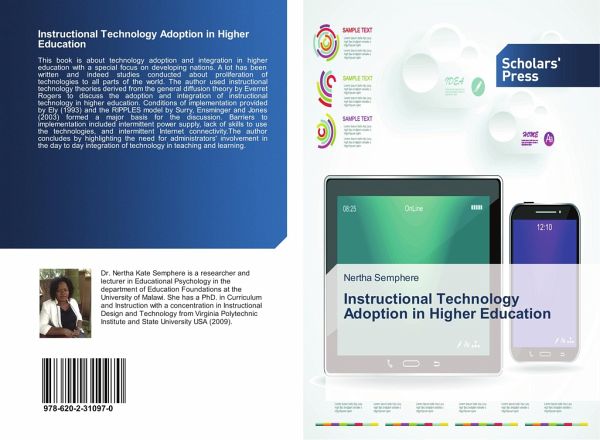
Instructional Technology Adoption in Higher Education
Versandkostenfrei!
Versandfertig in 6-10 Tagen
30,99 €
inkl. MwSt.

PAYBACK Punkte
15 °P sammeln!
This book is about technology adoption and integration in higher education with a special focus on developing nations. A lot has been written and indeed studies conducted about proliferation of technologies to all parts of the world. The author used instructional technology theories derived from the general diffusion theory by Everret Rogers to discuss the adoption and integration of instructional technology in higher education. Conditions of implementation provided by Ely (1993) and the RIPPLES model by Surry, Ensminger and Jones (2003) formed a major basis for the discussion. Barriers to imp...
This book is about technology adoption and integration in higher education with a special focus on developing nations. A lot has been written and indeed studies conducted about proliferation of technologies to all parts of the world. The author used instructional technology theories derived from the general diffusion theory by Everret Rogers to discuss the adoption and integration of instructional technology in higher education. Conditions of implementation provided by Ely (1993) and the RIPPLES model by Surry, Ensminger and Jones (2003) formed a major basis for the discussion. Barriers to implementation included intermittent power supply, lack of skills to use the technologies, and intermittent Internet connectivity. The author concludes by highlighting the need for administrators' involvement in the day to day integration of technology in teaching and learning.












